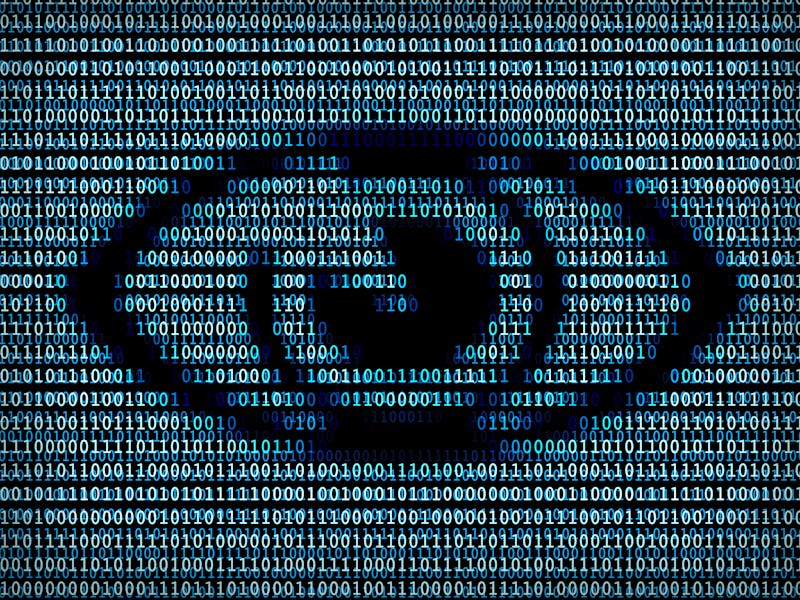The U.S. has more surveillance cameras per person than China, new study shows
But are all those eyes making us safer?

Though the United States is a country that preaches about freedom and China is known as an authoritarian state, a new report from PreciseSecurity.com claims the U.S. actually has more surveillance cameras per person. China has more CCTV cameras overall, but the U.S. is ahead when you break down the numbers of cameras per capita.
The United States has roughly 50 million cameras in total compared to China’s roughly 200 million. For perspective, the United States has around 330 million people compared to China’s population of nearly 1.4 billion.
“The United States has 15.28 CCTV cameras every 100 individuals, followed by China with 14.36 and the United Kingdom with 7.5,” the report reads.
Jay Stanley, senior policy analyst with the ACLU Speech, Privacy, and Technology Project, tells Inverse that it’s a bit surprising that the U.S. is outpacing China in this way.
“It’s an indication of just how rapidly surveillance technology is spreading in America,” Stanley says. He says it is now possible to “utterly blanket our public spaces with surveillance cameras,” and it would probably be affordable, but that doesn’t mean it should be done.
Russia is known as a surveillance state, and it may have more cameras per capita than the U.S., but this report was unable to establish that. There is only data available on how many CCTV camera cameras Russia has for some of its cities. The report found around 196,000 CCTV cameras are operating in Moscow and St. Petersburg combined combined.
Chicago is one of the most surveilled cities in America with roughly 35,000 cameras. New York, surprisingly, has fewer cameras with around 11,000. Another report on city surveillance from earlier this year found Atlanta is the most surveilled city in America per capita, with roughly 7,800 cameras for around half a million people.
The monitor of a security camera in Berlin, Germany.
Some might not find these cameras concerning and might assume they help keep us safe. However, there’s evidence this is not necessarily the case. While cameras do help law enforcement catch criminals, but security experts say we’re simply surveilling too much. If you have thousands and thousands of cameras doing surveillance 24 hours a day, it’s hard to figure out what footage might actually be useful. Furthermore, the cameras don’t even appear to help prevent crime. Studies from around the world have found CCTV cameras often aren’t helpful when you’re trying to solve a crime and don’t deter criminals.
“Studies have shown a lot of criminals aren’t that afraid of cameras,” Stanley says. “Simple things like a baseball cap and darkness can go along way towards rendering them ineffective for solving crimes.”
That’s not to say these cameras are useless. Having cameras in certain spaces in cities can definitely help make the city safer, but if there are too many cameras all over the place, then the benefits start to disappear.
Surveillance can cause people to reconsider getting involved in activism. It can threaten journalists who might be investigating the government. It can threaten lawyers who might be in legal battles with the government. It doesn’t appear to make us safer when there is this much surveillance, and it threatens many of our civil liberties.
There are also privacy issues to consider. When people know they’re on camera, it can cause them to change how they behave. They might not speak as freely, or they might adjust their behavior to conform to society.
See also: Americans traded privacy for convenience, and they regret it
“There’s no question that the proliferation of cameras in our public spaces has the real potential to invade privacy and chill people from exercising their constitutionally-protected rights, like free speech and association,” Stanley says.
Cameras are just one piece of how the government surveils us. Stanley says the government can use cameras in tandem with cell phone data, license plate trackers and more to learn a lot about what people are up to. When it comes to cameras, Stanley says we should also be considering how surveillance cameras are advancing to become more invasive by utilizing technologies like facial recognition to identify us and possibly even attempt to determine how we’re feeling.
“With facial recognition and video analytics, this is all on the cusp of changing,” Stanley says. “Every camera may not be just recording us in some dumb fashion but actively watching and judging us using A.I.”
We may be used to not having much privacy in public spaces, but the more we allow public spaces to be surveilled, the less freedom we’ll have as a society. As technology advances, these cameras and other devices that are used for surveillance will start to invade our privacy even further unless citizens demand their use be much more limited.